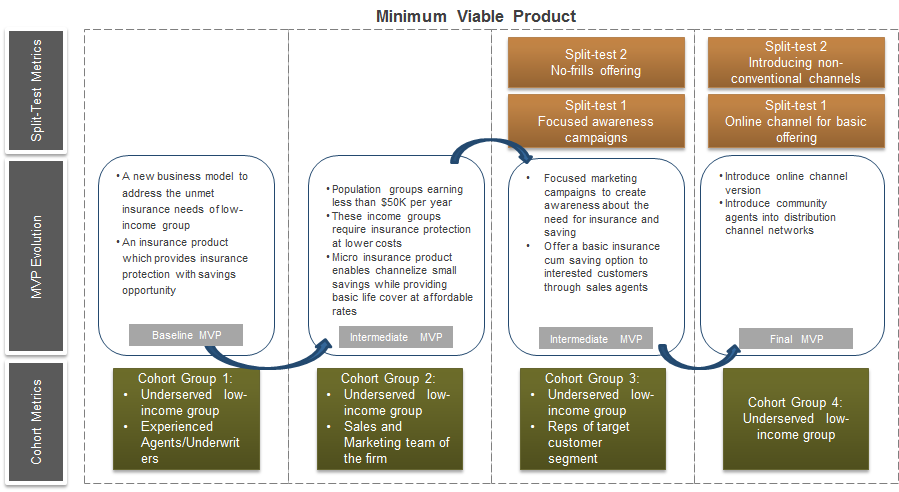Assume the following:
- New innovation idea has been qualified, with clear value and growth hypotheses
- Target customer segments have been identified
- The business model has been designed to support the optimal delivery of the idea
- Innovation accounting principles have been employed to determine the appropriate metrics to track
Now the challenge becomes how to validate the idea (WHAT) and the business model behind it (HOW). Enter the “Wedge” approach to experimentation and deployment…
Much as the name implies, a wedge approach to experimentation starts small – you insert the tip of the wedge where it is most likely to have positive effect (e.g. the door jam, or parallel to the seams in a log). In business terms, pick a customer segment that has the most underserved opportunity, and ideally is one that could have ripple effects across other segments when these needs are met. Put another way, pick a high-profile segment where success is very likely to build momentum.
It is rare that an actual wedge reaches its ideal state without a few taps – the experimentation version of the wedge works the same way. Given that this is early stage experimentation, start by validating the fundamentals of the idea – the value and growth hypotheses – with direct segment interaction. Note that traditional metrics (e.g. profitability, growth, retention, etc.) are NOT relevant for this early stage. Assuming both can be validated, then progressively add more detailed idea validation with the target segment, making adjustments at every stage based on validated learning. The key principle to abide by is to front-load the biggest, most uncertain assumptions early in the experimentation process. Using Ries’ Minimum Viable Product (MVP) principles is an excellent way to put this theory into practice (see illustration below).
So assuming the commercial viability gets validated, and now the time comes to deploy… what do you do? You keep using the wedge approach! This method is just as relevant for deployment as it is for experimentation.



